Choosing the milling cutter diameter
Milling is the processing of a workpiece with a tool that has the main rotation movement and at least one feed movement.

Milling is most often used for processing:
- Flat surfaces
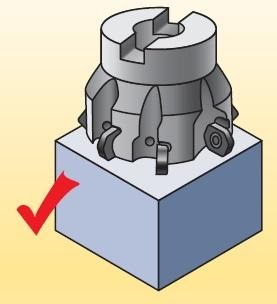
- Grooves, spiral grooves
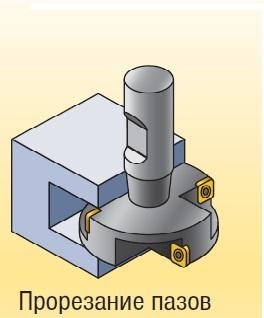
- Shaped surfaces
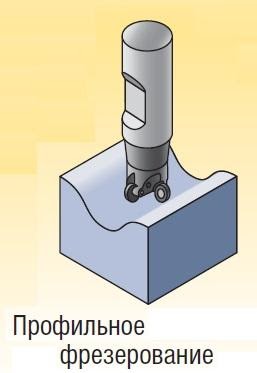
- Gears and threads
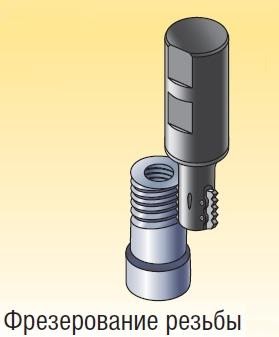
For each type of processing, it is necessary to choose the right milling cutter diameter, especially for processing flat surfaces.
Milling of planes is usually performed:
- end mills
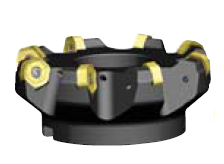
- cylindrical milling cutters
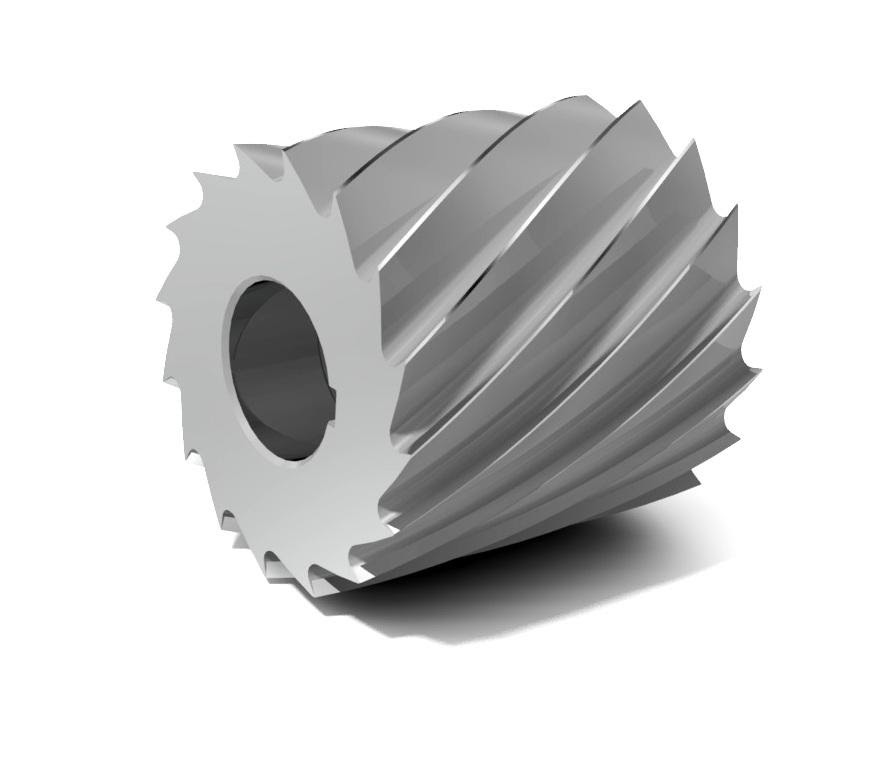
- end mills
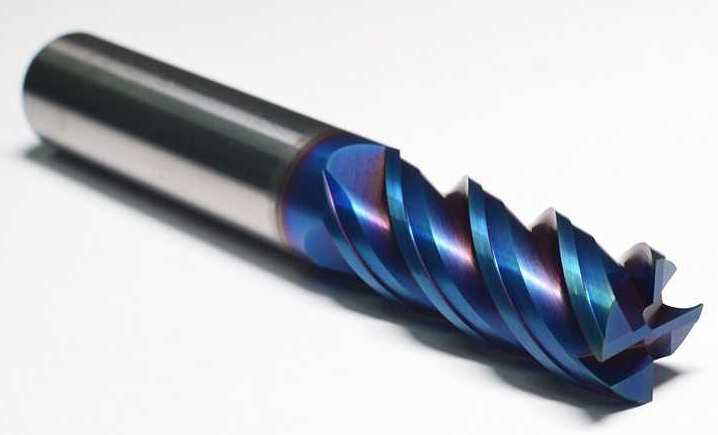
End mills, in relation to others, have a number of advantages:
- more rigid mounting on the mandrel or spindle;
- smooth operation of a large number of simultaneously working teeth;
- high cutting and feeding speeds, especially for milling cutters equipped with hard alloy plates.
Therefore, milling of planes in most cases is advisable to produce end mills.
How to choose the right milling cutter diameter
The most suitable diameter of the end mill depends on the size of the workpiece being processed, as well as on the power characteristics of the machine. At the same time, an important factor determining the successful execution of the milling operation is the relative position of the processed surface and the milling cutter.
The milling width has a particularly strong influence on the choice of the milling cutter diameter when processing with end mills. In this case, the ratio of the milling cutter to the part in the cutting width should be approximately 3:2 or the diameter of the milling cutter should be 1.5 times the width of the part. For example, if the cutting width is 100 mm, then choose a cutter diameter of 160mm.
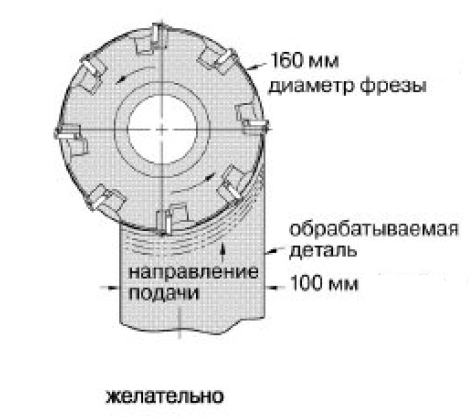
If the width of the part is large, the diameter of the milling cutter is selected, corresponding to the power of the machine spindle, and processing is carried out in several passes. For example, if the width of the part is 600 mm, and the machine is equipped with a standard spindle with a cone of 50, a 200mm diameter cutter should be used and milled in five passes with a milling width of 120mm or in four passes with a cutting width of 150mm, depending on the power and rigidity of the machine.
It is undesirable to choose a milling cutter diameter approximately equal to the cutting width. The chips formed at the entrance and exit will be very thin. Because of this, it will not be able to remove heat as efficiently as a thicker one, and the heat is transferred back into the plate, causing increased wear of the cutting edge. There is also a possibility of jamming of the part in the exit and entrance zones.
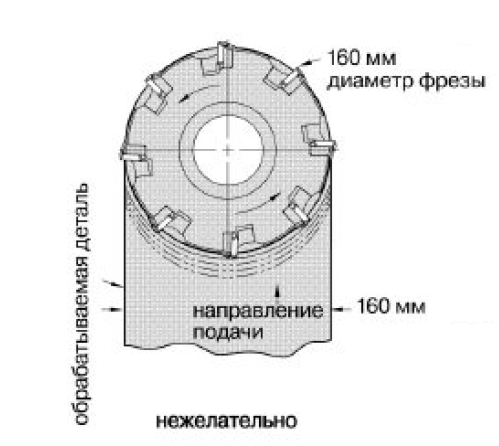
If there is no milling cutter of the desired diameter, then you can get out of this situation thanks to the correct location of the milling cutter:
- Install the cutter so that approximately 1/4 of the body is outside the part, and mill in several passes.
- Choose a cutter with a negative angle of initial contact (preferably).
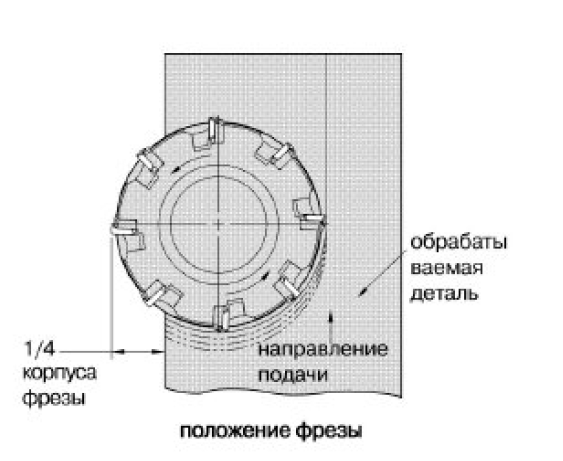
When the diameter of the cutter significantly exceeds the width of the workpiece, the axis of the cutter should be shifted from the axis of symmetry of the workpiece. Of course, the close location of the milling cutter axis to the workpiece axis allows for the shortest path of the milling cutter teeth in the metal, reliable chip formation at the inlet and a favorable situation regarding impact loads on the plate. But when the axis of the cutter is located exactly along the axis of symmetry of the workpiece, a cyclic change in the cutting force during insertion and exit can lead to vibrations that will lead to damage to the plate and poor surface roughness.
When face milling, if possible, avoid milling planes with intersections of grooves and holes, since in this case the cutting edges will work in unsatisfactory conditions of intermittent cutting. Perform the operation of making holes after milling. If this option is not possible, then when the cutter crosses the hole, reduce the feed rate by 50% of the recommended one.
When processing large planes, try not to interrupt the contact of the cutter with the workpiece, bypassing the surface along the perimeter, and not through several parallel passages. The corners must be processed along a radius exceeding the radius of the cutter in order to exclude the possibility of vibrations associated with a sharp increase in the angle of coverage of the cutter.
The processing of the plane with an end mill is shown below in the video:
Used literature:
- Kennametal catalog- technical part (milling)
- Information and analytical electronic magazine "Planet Sam"
- InMet — Metalworking "Milling with end mills"
- Pramet Catalog — Milling 2012
Catalog of metal cutters at the Enex online exhibition: https://enex.market/catalog/Raskhodnye_materialy/metallorezhushchiy_instrument/frezy_po_metallu/.
